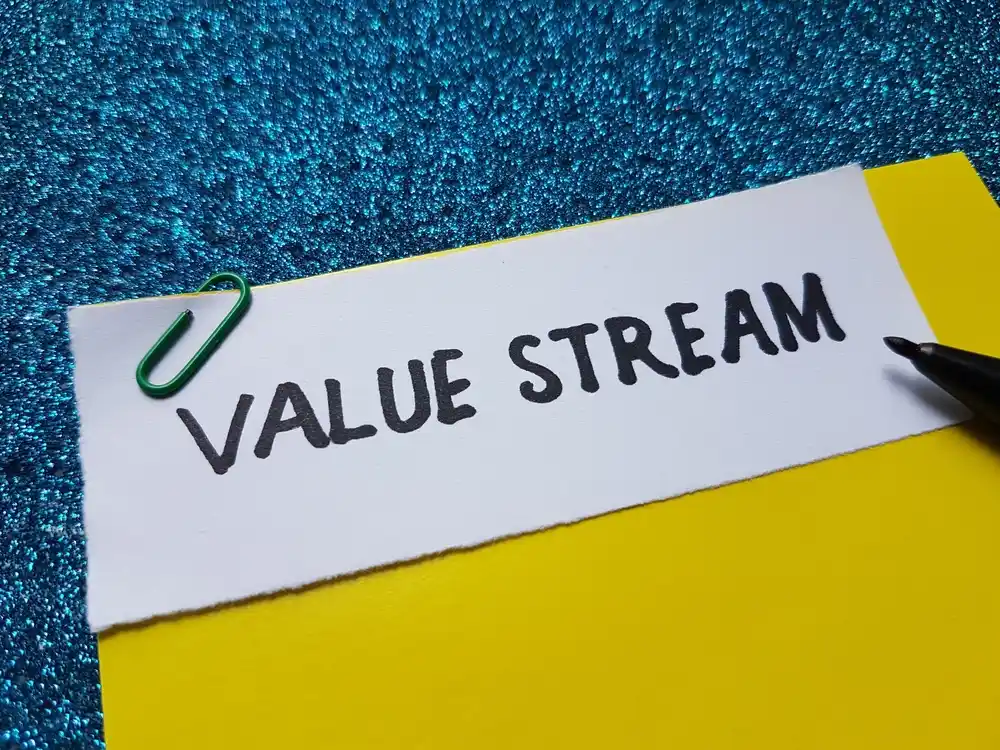In most modern industries, productivity and efficiency depend on effective communication and collaboration. Teams and individuals may have to work together across broad geographic areas, managing and overcoming distance, communication tools, time zones, and language barriers. One tool that can be useful to improve the collaborative process —and one that operations consulting firms often recommend—is value stream mapping.
What Is Value Stream Mapping in Operations Consulting?
Value stream mapping involves identifying, defining, and optimizing each step involved in producing a product, providing a service, or completing a value-adding project from start to finish. In its simplest form, it typically involves making a visual flowchart of each step, from conception to realization, to identify potential bottlenecks or sticking points.
Value stream mapping software can be used for advanced analysis, identifying subtle inefficiencies in the process that may not be immediately apparent. The goal is to detail each significant process step and evaluate how it adds value—or fails to add value—to your product or service from the customer or end user’s perspective. This makes it a vital tool for organizations engaging in operational excellence consulting and supply chain management consulting initiatives.
How Does Value Stream Mapping Work in Business Operations?
Many products or services have discrete component steps, each of which must be performed by an individual or team before that team “hands off” to the next group. Separating out each link in the chain allows you to examine each individually, addressing issues and directing additional resources with pinpoint precision for maximum efficacy.
For example, a business operations consulting firm might use value stream mapping to analyze where delays occur in a supply chain, helping clients identify hidden costs and inefficiencies. In manufacturing and logistics, this often ties directly to the work of cost reduction consultants, who use data-driven insights to cut waste without sacrificing quality.
Benefits of Value Stream Mapping for Operational Excellence
Improving the efficiency of the hand-offs helps reduce delays, improve productivity, and reduce waste. In addition to the direct economic benefits, reducing inefficiency and redundancy in the collaborative process can also reduce frustration and improve morale. Showing a team the “big picture” of how interdependent their individual activities are can also help foster a culture of collaboration and accountability.
When implemented through operations consulting services, value stream mapping not only strengthens internal workflows but also enhances the efficiency of external partners—particularly within supply chain management consulting projects where logistics and supplier performance play a critical role.
What Industries Can Use Value Stream Mapping in Their Supply Chain?
It’s easy to see how value stream mapping can apply to industries that physically manufacture or produce a product. On an assembly line, for example, it’s easy to see where a bottleneck is occurring that slows down the overall production speed; similarly, a distributing company can easily identify delays caused by a slow shipping carrier.
What’s less obvious is how well this system applies to today’s knowledge workers. In fact, many projects have sequential components, each step dependent on successful and efficient completion of the previous steps. Industries like software development, website creation, architectural design, product development, and others have easily discernable patterns for typical projects.
Much of the waste and frustration in knowledge work occurs in the handoffs (or delays between the handoffs) between each link in the chain. Value stream mapping can help improve the efficiency of the progression and the overall quality of the product or project—making it a powerful tool that operational excellence consulting firms use across industries.
How Can I Implement Value Stream Mapping in My Business?
You can assess whether value stream mapping could be a good tool for your organization by gathering your team and whiteboarding the various steps involved in making, developing, or providing your product, project, or service from concept to delivery.
If you believe it may be appropriate, an operations consulting expert can help evaluate your business to determine how to implement more advanced value stream mapping tools. These can help you analyze deficiencies and improve each identified step of the process and the connections between them.
Cornerstone Consulting Organization’s operations and engineering consulting experts specialize in these services, guiding clients through value stream mapping as part of broader operational excellence consulting and supply chain management consulting solutions.
Whether you’re looking to improve workflows, reduce waste, or engage trusted cost reduction consultants, CCO provides the insights you need. Contact Cornerstone today to learn more about our industrial engineering services.
CCO cannot and does not provide legal advice. It’s important to consult with qualified counsel before adopting any new policies. It’s also your responsibility to determine whether legal review of work product is necessary prior to implementation.




